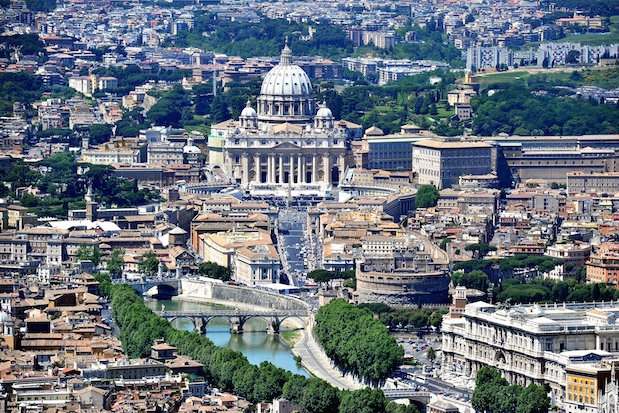From ‘The Magnanimity of Italy’, The Spectator, 18 July 1915:
The Italian always aspires not only to do great things, but to do them in the great way, whether it be to build a church, a hospital, or a railway station, paint a picture, or write an ode. Picturesqueness and the refinement of miniature work—these appeal to him very little. He wants the big brush, the big canvas. What Sir Thomas Browne so well called ” the wild enormities of ancient magnanimity” inspire no fears in his mind. The grandiose does not alarm him, but only the mean and the petty. This great-heartedness is shown very clearly not only in Italian manners, which have always been the most stately and full-sweeping in the world, but in the Italian titles and the Italian language. For example, the great officials of Venice were content with no less a title than “Magnifico,” and it is from the Italian lingua franca of the Levant that we get such titles as the Grand Seigneur and the Sublime Porte. It is, however, in architecture, which is so essentially the Italian art, that the magnanimity of the Italian is most clearly seen. In every age it has been the same. Nothing is too big or bold or splendid for the Italians to attempt in stone or in brick. Where ordinary mortals build a shed, the Italians rear a palace. The sightseer who wanders to the back of St. Peter’s in order to get a side-view of how Michael Angelo hung the Pantheon in heaven will realize what we mean provided lie looks down into the tinge foundations of St. Peter’s displayed there in a sort of dry ditch or giant’s version of a London area. The foundations seize the earth in a kind of Titanic grasp which makes one feel, to quote Sir Thomas Browne once more, that “man is a noble animal.”
Rome, indeed, is full of Italian magnanimity in stone. St. Peter’s and the Vatican are no exceptions, but simply examples. The Coliseum and the Pantheon stand to show that the ancient Roman was never content unless he could “lick creation.” The modern Italian is quite as determined to do his bit greatly. Take this as an example. When the Italians entered Rome in 1870 they were as a nation exceedingly hard-up. They had the biggest Debt per head in Europe, they had a greatly depreciated paper currency, and the Italian people were groaning under the heaviest load of taxation in Europe. All this, one might suppose, would have made the Government keep off expensive bricks and mortar in a city already filled with glorious buildings, a city which needed no adornment from modern hands. Not a bit of it! The first thing that the Italian government did was to build the biggest Treasury in the world—to match, said cynical critics, the biggest national indebtedness. It is true that they only built in brick and stucco, and in a style of architecture which can hardly be called satisfactory—that of the Third Empire. Nevertheless, up went a building which by a foot or two beats the Vatican itself for size, and must be admitted to be a potent and sound piece of work in spite of its obvious faults.






Comments